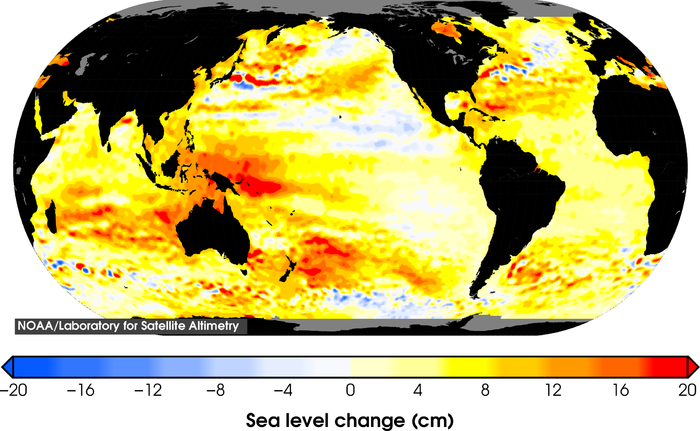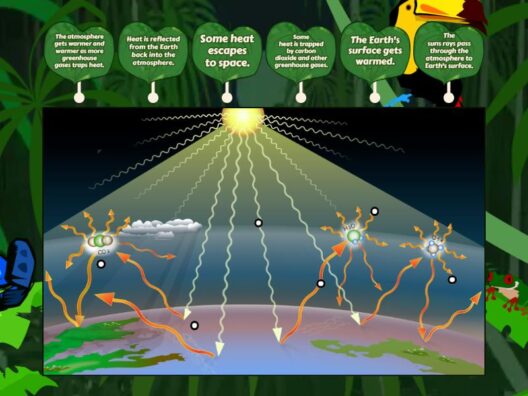As climate change increasingly dominates global headlines, one of the most salient and pressing issues is the alteration in sea level, often perceived through a lens of alarm and urgency. The query frequently arises: Is sea level rising or falling? To answer this question, one must delve into the multifaceted phenomena that drive ocean-level changes, thereby illuminating the underlying facts.
With scientific backing, an unequivocal conclusion emerges: global sea levels are on a trajectory of rise, a reality substantiated by an array of data collected over decades. However, the dynamics of this phenomenon are complex, with myriad factors contributing to fluctuations in regional sea levels. A thorough examination of these factors helps clarify misconceptions and addresses concerns related to coastal living, environmental policy, and future planning.
The current state of sea level rise is fundamentally rooted in two critical processes: thermal expansion of seawater and the melting of glaciers and polar ice caps. As the Earth’s temperature escalates, ocean water absorbs heat, leading to thermal expansion. This phenomenon occurs because warmer water expands, contributing to the overall increase in sea levels. Additionally, the melting of glaciers and the Greenland and Antarctic ice sheets further exacerbates rising sea levels. The melting ice contributes copiously to the volume of seawater, demonstrating how interlinked these issues are. Understanding these scientific processes creates a foundation for recognizing why coastal communities are vulnerable and necessitates strategic responses.
Examining the data chronologically reveals a stark reality: since the late 19th century, global sea levels have risen approximately 8-9 inches (20-23 cm) and are forecasted to increase at an accelerating pace. Projections indicate that by 2100, sea levels could rise by as much as 1 to 4 feet (0.3 to 1.2 meters) depending on global greenhouse gas emissions. This projection accentuates the urgency for policymakers and communities to address mitigation strategies proactively.
The localized effects of rising sea levels are disparate and heavily influenced by geography. While global averages suggest a straightforward rise, many coastal regions experience different rates of change. Factors such as land subsidence, ocean currents, and variations in the gravitational pull of Earth can intensify or mitigate sea level rise, resulting in pronounced contrasts across different locales. For example, cities like New Orleans and Miami are sinking, exacerbating the risks posed by rising tides. Conversely, areas such as Alaska are experiencing a relative rise in land elevation, which may obscure the immediate impacts of global sea-level rise.
Coastal ecosystems, too, are starkly impacted by oscillating sea levels. Mangroves, salt marshes, and coral reefs serve critical functions in coastal protection, biodiversity, and carbon sequestration. A rise in sea level encroaches upon these habitats, threatening the intricate balance of local ecosystem services. Studies have shown that, if unmitigated, such environmental changes can lead to alterations in species distributions and could critically endanger endemic marine life, highlighting a significant intersection between ecological health and sea level dynamics. Thus, the ecological ramifications of rising sea levels cannot be underestimated as they serve as an imperative aspect of broader environmental sustainability.
Adaptation and mitigation strategies must acknowledge the stark realities of these environmental changes. Urban planning must incorporate an understanding of regional sea-level trends, with infrastructure designed to withstand flooding and storm surges. Coastal communities worldwide are increasingly investing in resilient design, fortified seawalls, and natural barriers, such as restored wetlands, which offer dual benefits of improving biodiversity while protecting human interests. Additionally, the role of policy cannot be overlooked; governments must enact legislation to cut greenhouse gas emissions, which remains the ultimate driver of climate change and its associated effects on sea level.
A critical concern for stakeholders in coastal regions is the potential economic impact of rising sea levels. The real estate market, tourism, and local industries could face severe repercussions. Properties may become uninsurable, and populations might be forced to relocate, resulting in economic displacement. Furthermore, infrastructure damage during extreme weather events can exact a toll far beyond direct costs, as communities wrestle with recovery efforts. Understanding these economic dimensions is essential for individuals and businesses as they navigate future investments and sustainability measures.
Educational outreach is also paramount in preparing societies for the ramifications of rising sea levels. By fostering awareness of sea-level science and climate change’s broader implications, community involvement can be galvanized to advocate for proactive solutions. Understanding that climate change is not an abstract concern, but one that manifests in tangible threats, can empower residents to engage in initiatives aimed at securing their future.
The dialogue surrounding sea levels is necessarily evolving, fueled by advancements in research and shifting societal priorities. Rather than falling into a cycle of despair, recognizing sea level rise as a challenge to be met with creativity and collaboration offers a pathway forward. Science unequivocally indicates that sea levels are on the rise, but communities worldwide are equipped with the tools to adapt, innovate, and ultimately thrive against the backdrop of this pressing issue.
In conclusion, while sea levels are not uniformly rising or falling everywhere, the indisputable trend of global sea-level rise presents real challenges that permeate ecological, economic, and social dimensions. To navigate the complexities surrounding these changes, informed decision-making and proactive engagement are not only desirable but imperative for current and future generations. Seeking collaborative solutions will pave the way toward resilience in the face of a phenomenon that is unyielding and evolving.








